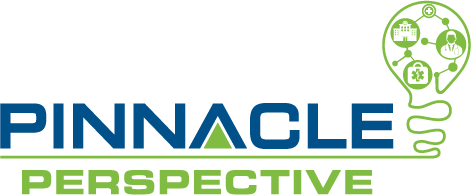
Before we discuss documentation guidelines, let’s define psychotherapy. Psychotherapy, also known as talk therapy, is a type of therapy during which the provider uses a series of techniques to treat the mental and emotional health problems of a patient.
When coding psychotherapy, there are several code combinations available, depending on the type of service performed and whether it was performed with or without an Evaluation and Management (“E/M”) service.
CPT® codes 90832, 90834, and 90837 are assigned when only the psychotherapy portion was performed during the encounter. All three (3) codes are based on time and range from 30-60 minutes.
If an E/M service is performed on the same day as psychotherapy by the same physician or other qualified healthcare professional, the E/M service and psychotherapy must be separately reported. The medical record must document the two services are significant and separately identifiable which includes time spent with the patient during the encounter. CPT® codes 90833, 90836, and 90838 are assigned when psychotherapy is performed along with an E/M service during the encounter. Again, all three (3) are based on time spent with the patient in psychotherapy. These codes are to be assigned in addition to E/M codes (99202-99255, 99304-99316, and 99341-99350).
Below are the psychotherapy codes along with their descriptions, and the time ranges for each:
| PSYCHOTHERAPY ALONE | PSYCHOTHERAPY WITH E/M | ||||
| CPT | Description | Time Range | CPT | Description | Time Range |
| 90832 | Psychotherapy, 30 mins w/ patient | 16-37 mins | 90833 | Psychotherapy, 30 mins w/ patient when performed w/ an E/M service | 16-37 mins |
| 90834 | Psychotherapy, 45 mins w/ patient | 38-52 mins | 90836 | Psychotherapy, 45 mins w/ patient when performed w/ an E/M | 38-52 mins |
| 90837 | Psychotherapy 60 minutes with patient | Minimum of 53 mins | 90838 | Psychotherapy, 60 mins w/ patient when performed w/ and E/M | Minimum of 53 mins |
Unfortunately, after the FY 2024 CPT® updates, there is no longer a code to assign for a prolonged service of over sixty (60) minutes. To report for the additional time spent, report CPT® codes 90837 and 90838 for psychotherapy over 53 minutes.
There are certain documentation requirements for psychotherapy. These requirements are generally standardized across Medicare Administrative Contractors (“MACs”) and commercial payers; however, a best practice is to always research each unique carrier for specific guidelines.
Below is a list of documentation guidelines for psychotherapy published by the Centers for Medicare and Medicaid Services (“CMS) under Article A56937:
- Name of beneficiary
- Date of service
- Type of service (individual, group, family, interactive, etc.)
- Time spent – best practice is to document a start and stop time.
- Modalities
- Frequency of treatment furnished
- A clinical note for each encounter, which in the aggregate, summarizes the following items:
- Diagnosis
- Symptoms
- Functional status
- Focused mental status examination
- Treatment plan – including measurable goals of care
- Prognosis
- Progress to date
- Identity and professional credentials of the person performing the service
Now that we are aware of the guidelines, we will break down some of the required elements that are often missed and / or misunderstood within provider documentation.
Functional Status – Is defined as an individual’s ability to perform routine daily activities required to meet basic needs, fulfill usual roles, and maintain health and well-being. This information can be inferred from the subjective portion of the note. For example, if the person is currently working, questions may be asked relating to how they are handling their personal relationships, schoolwork, etc. The provider should document if the patient can complete activities of daily living (“ADLs”) but should specify if the patient is (or is not) performing these activities to count as functional status.
Treatment plan with measurable goals of care – Documentation guidelines require a treatment plan to contain measurable goals of care. The provider can utilize a scale, number, or severity in the documentation to meet a measurable goal. These goals are specific to the patient and should include the treatment and / or therapy they are receiving. The treatment plan should not be a templated document or statement carried over to each note or be used as a general template for all psychotherapy treatment plans.
Below are a few examples of proper documentation:
“The patient scored 9 on their PHQ-9 today. Patient will reduce that score by 2 points in three months’ time.”
“Patient will reduce angry outbursts to once per week by following anger management techniques learned and practiced in sessions for a period of 3 months.”
“Patient will reduce anxiety attacks to 2 per week by following techniques learned in sessions for a period of 3 months.”
Prognosis – A prognosis is how the patient is expected to respond to treatment. A prognosis should not be confused with the diagnosis; however, the two are related. A prognosis is a predication as to the outcome of treatment whereas a diagnosis is identifying the problem and giving it a name.
Many factors go into determining the prognosis. The provider can utilize statistics regarding condition outcomes. Additionally, they may use a variety of assessments and methods to determine the patient’s prognosis.
Below are a few examples of typically assigned prognoses:
- Excellent: Indicates there is a strong likelihood the person will fully recover with minimal detrimental impacts on their functioning and quality of life.
- Good: Indicates a person has a good chance of responding well to treatment and will have a good quality of life in the future.
- Fair: Indicates a person may have some response to treatment, but that their condition will likely have a notable impact on their life and ability to function.
- Poor: Indicates their condition is unlikely to improve and that their quality of life will be significantly affected.
- Guarded: A mental health professional may use this term when they do not have enough information to predict the outcome.
Psychotherapy documentation can seem overwhelming, as there are many elements and guidelines to remember. However, after you understand each component, it is quite easy to implement. That is where we can help! PERCS is here to navigate you through the nuances of documenting for psychotherapy and keeping you compliant. If you have questions or need assistance, please contact Alysia Delozier, CPC, CPMA, Senior Physician Auditor / Educator at ADelozier@AskPHC.com or Lori Carlin, CPC, COC, CPCO, CCS, CRC, Principal, at LCarlin@AskPHC.com.
References:
https://www.cms.gov/medicare-coverage-database/view/article.aspx?articleId=56937&ver=30

